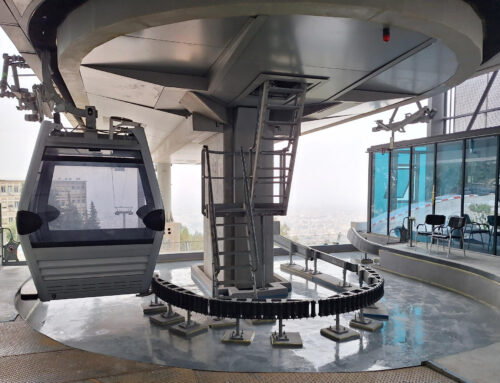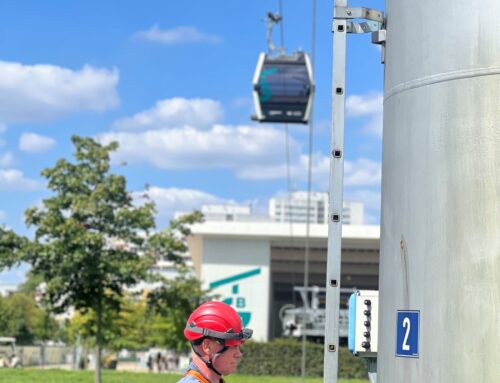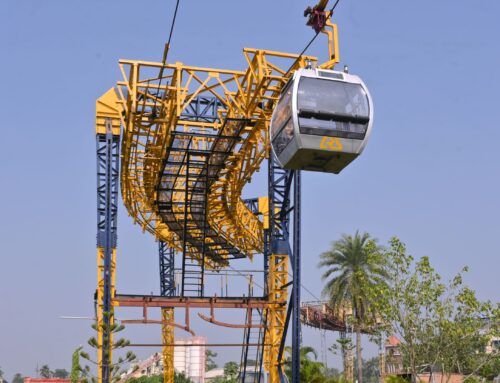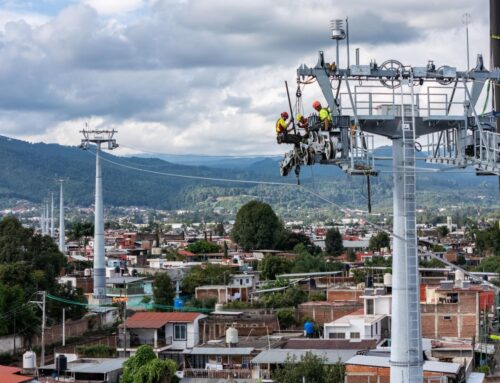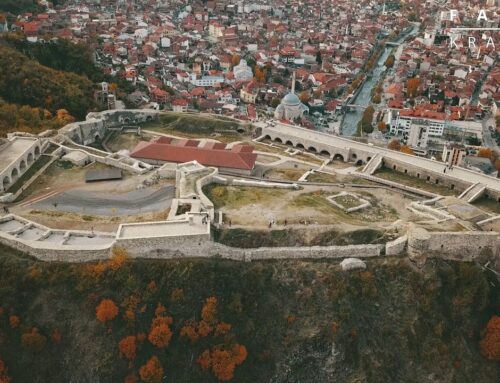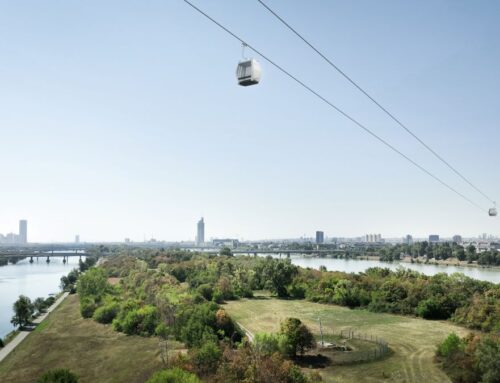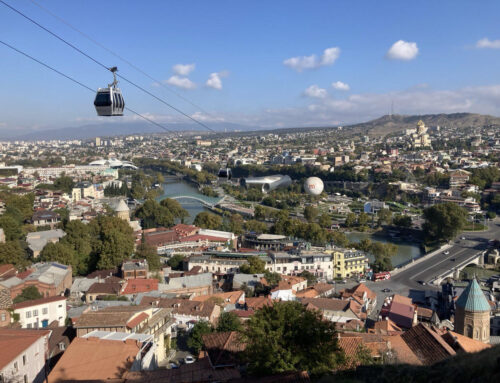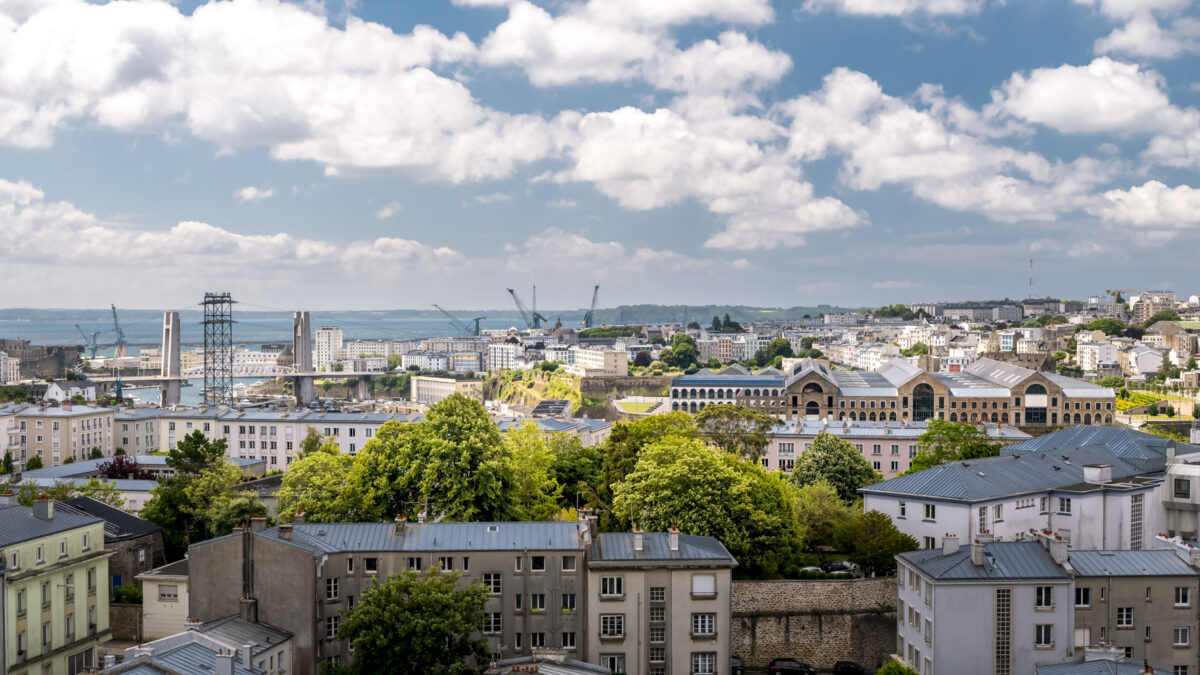
Cities, SI Urban 3/2024
Brest: How the first urban cable car revitalises an entire city
The first urban cable car in France, unanimously approved by the city council in December 2011 and welcoming its first passengers in November 2016, has now surpassed the symbolic milestone of its one millionth passenger.
This exceeds the original traffic forecasts. The Brest cable car was well received as soon as it opened. Within twelve months, it had already reached 700,000 passengers. It also fits in well with the existing transport system: It does not compete with the tram, but actually promotes the use of public transport in Brest.
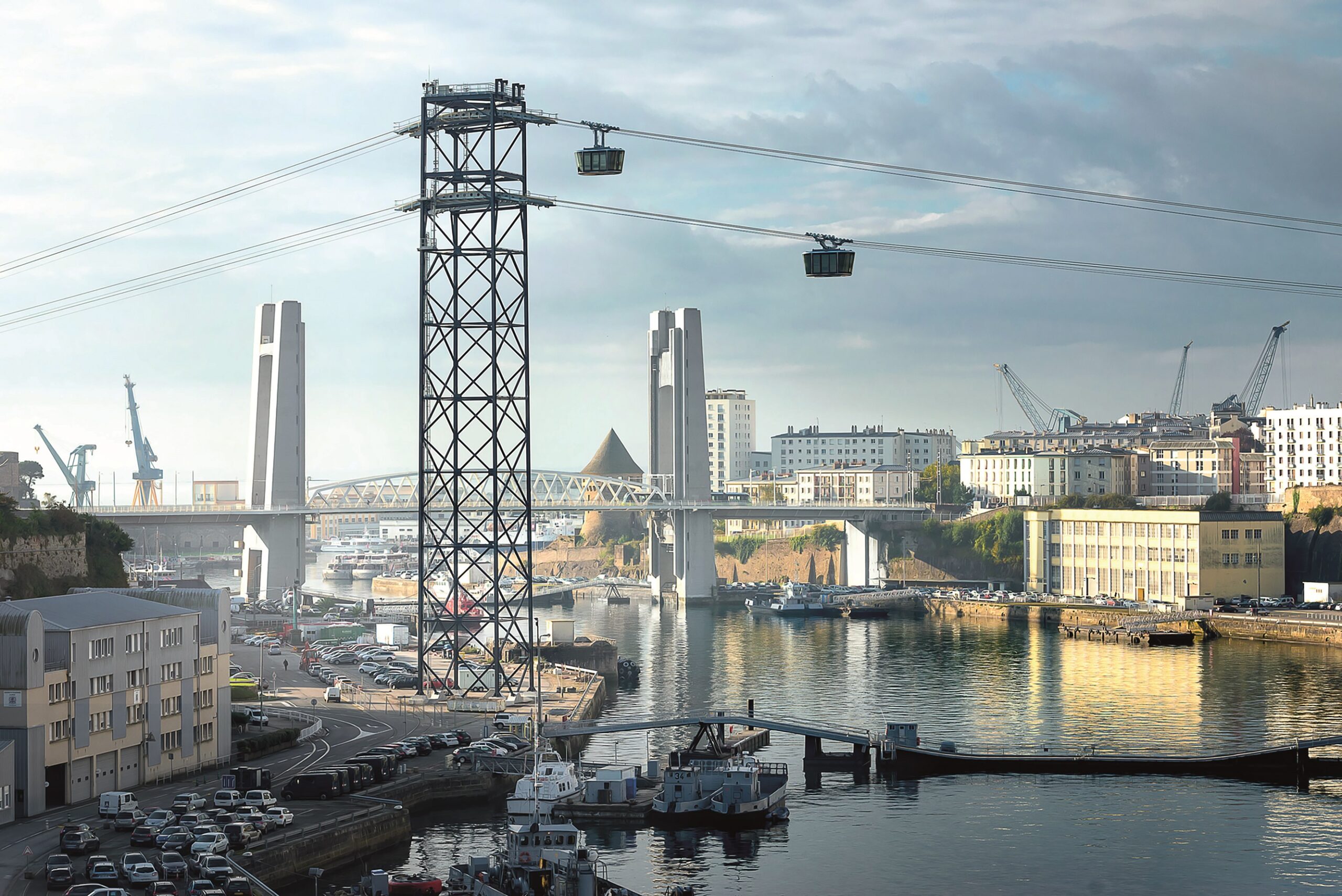
Great height
The 82-meter-high industrial design support allows ships to navigate the river below.
Citizens use it for their daily journeys, while tourists appreciate the view of the French harbour city. Locals also use the cable car to get to the library and the city‘s studios. The aerial tramway currently transports 750,000 people a year (as of 2023) and is in operation 350 days a year.
Revitalisation of the Capucins
The Quartier des Capucins consisted of factory halls of the French navy. After decommissioning in 2004, Brest decided to preserve the halls and create a new neighbourhood with space for culture and gastronomy.
One problem, however, was the neighbourhood‘s access to public transport: the tram and bus stops for lines 1 and 41 were not close by.
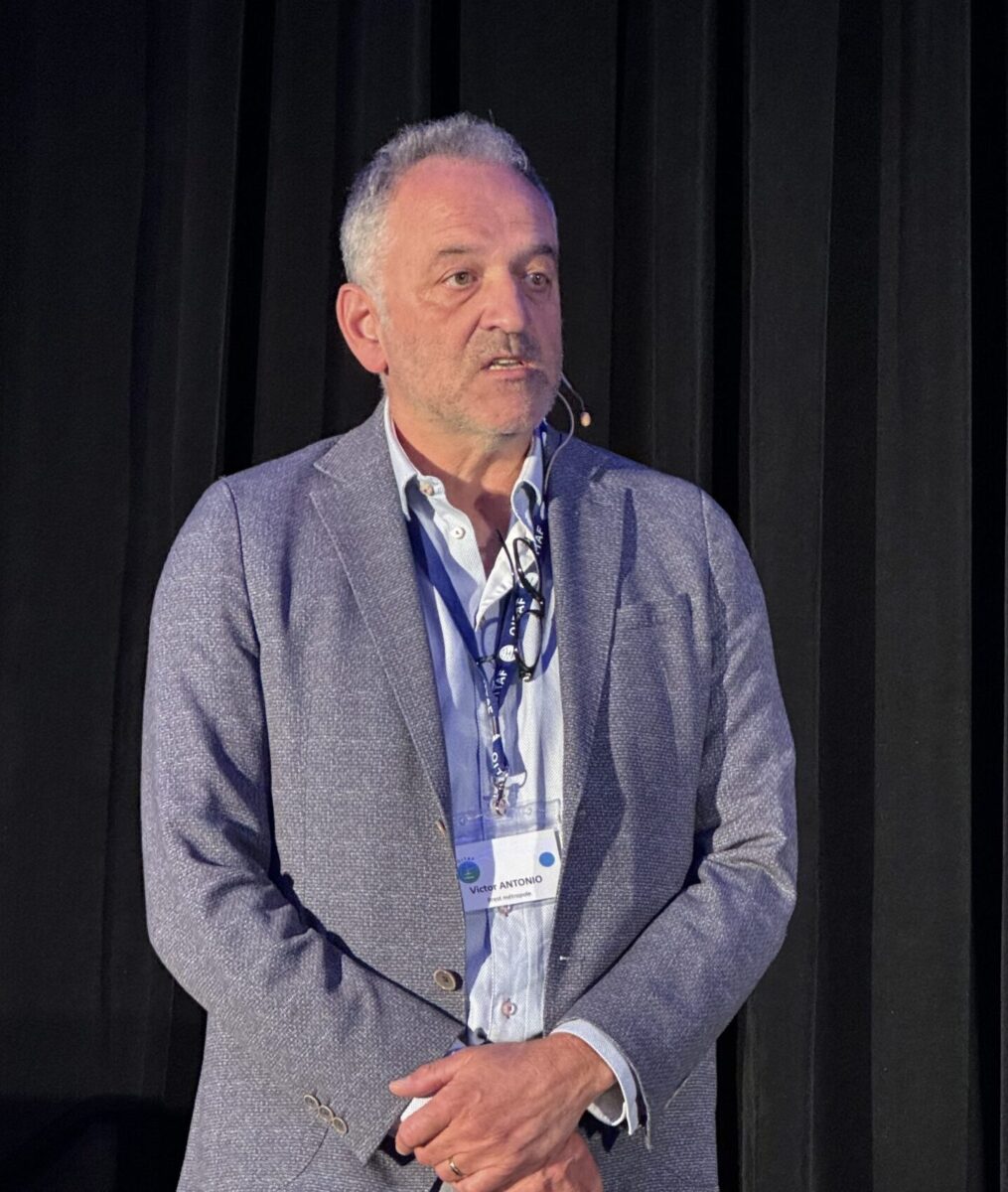
Victor Antonio
Directeur des Mobilités Brest
“The crossing over the Penfeld has created a direct connection that makes both banks of the river more easily accessible for the population. The cable car has also extended the city‘s core area. In addition to supplementing public transport, the aerial tramway with its unique view over the city is also a tourist attraction.“
Brest therefore considered several options, including a floating bridge, a conventional bridge and the cable car. The aerial tramway convinced due to its lower construction costs and greater comfort.
The cable car helped to expand the centre of Brest and make the newly designed quarter on the right bank more attractive. The catering and shop operators in the Quatier des Capucines count around one million visitors a year.
Special design
The Capucins station is architecturally integrated into the building of the former naval hangars.
Integration of the cable car
The Capucins Station is housed in a historic French navy building to save space and preserve the cityscape of the harbour town.
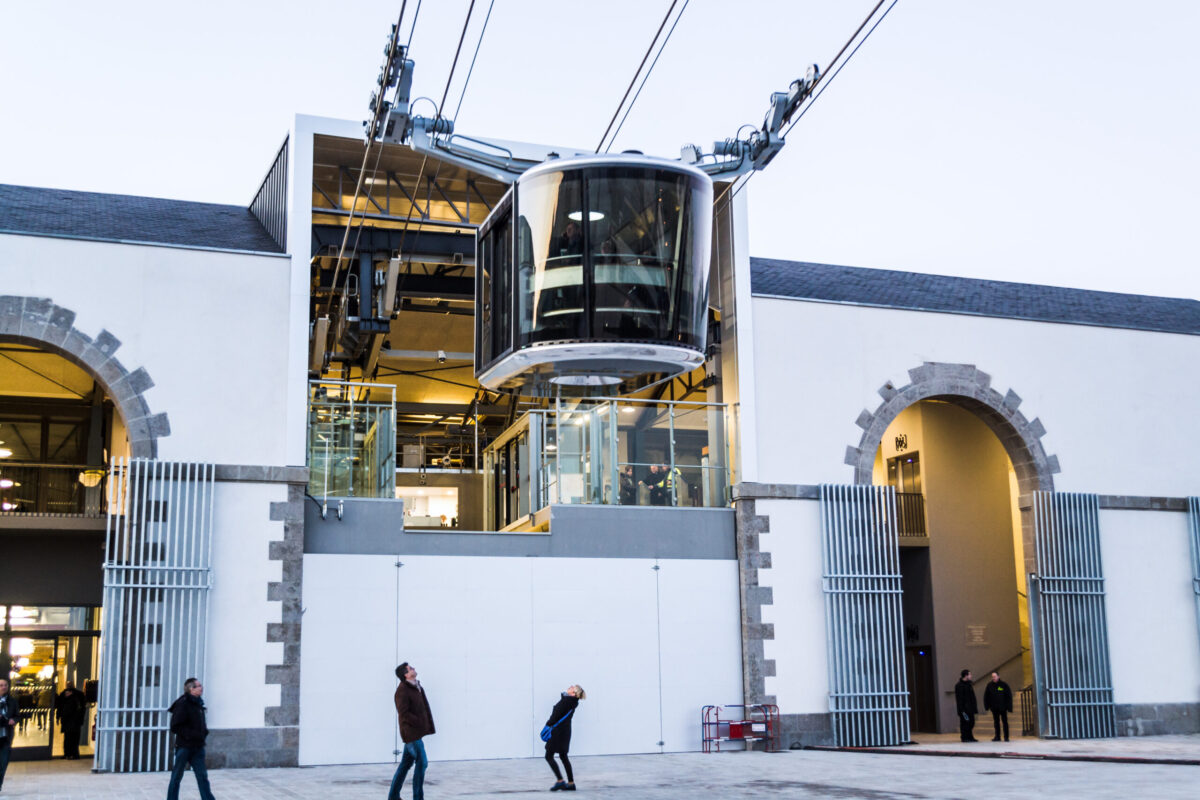
This is where the motors, brakes, tensioning of the traction cables and anchoring of the suspension cables are located. Much of this technology is visible through glass panes.
Preserving the view of the sea and the city also played a role in the design of the Jean Moulin station. It is partly housed on a platform that extends over the harbour area below.
The station building is compact and consists of two covered entrances. What both stations have in common is that access is at ground level.
Special feature
The two cabins Lewin and Charlotte do not commute next to each other, but cross over each other.
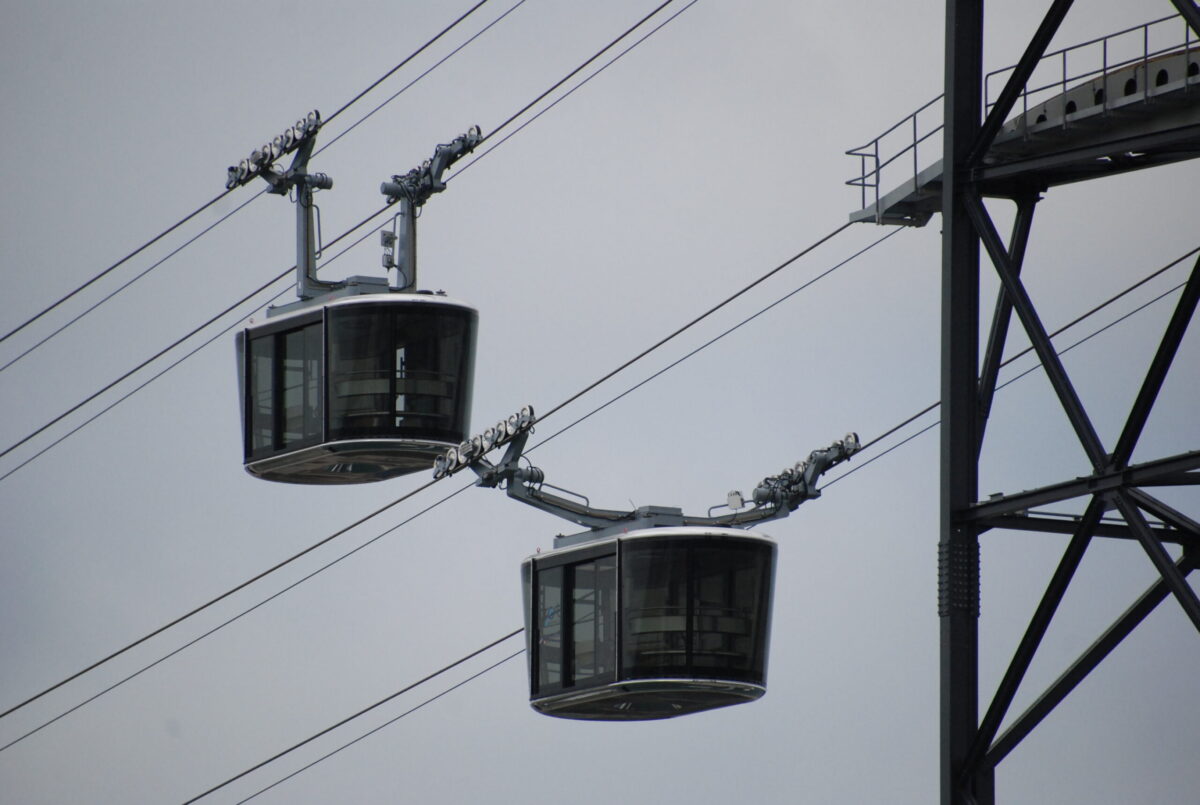
Unlike conventional reversible aerial tramways, the cabins cross over each other instead of travelling side by side. The reason for this design is that the cable car has two instead of one haul rope. This reduces the space required in the stations.
Technical data
Télépherique de Brest
| Type: | Aerial tramway |
| Length: | 419 m |
| Travel time: | circa 3 m |
| Number of cabins: | 2 |
| Cabin capacity: | 60 p |
| Capacity: | 1.220 p/h/d |
